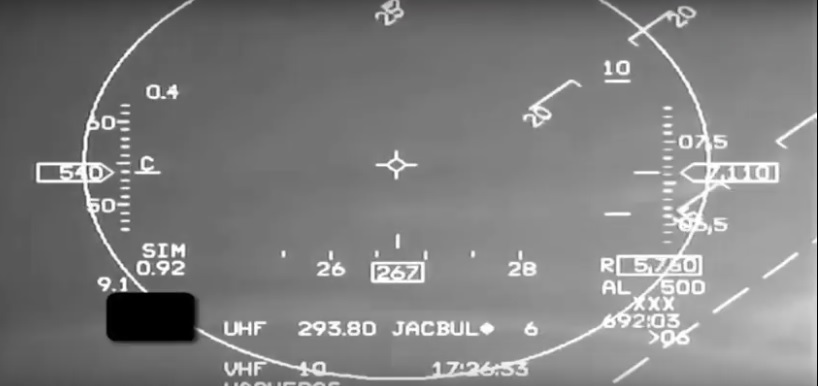
This newly declassified video footage from the head-up-display of a U.S. Air Force Arizona Air National Guard…
F-16 records the dramatic moment when its unconscious pilot is saved from certain death by the aircraft’s Automatic Ground Collision Avoidance System (Auto-GCAS).
Our Instagram is the cat’s pajamas:

The event is considered the fourth confirmed "save" of an aircraft by the system since Auto-GCAS was introduced into the Air Force F-16 fleet in late 2014. Developed over almost three decades by Lockheed Martin, NASA and the Air Force Research Laboratory, the system is designed to automatically execute a ground-avoiding maneuver if it detects an impending collision.
Aimed at reducing accidents caused by controlled flight into terrain by 90%, the system completed research and development under Air Combat Command’s Fighter Risk Reduction Program in 2010. It began transitioning to the Block 40/50 F-16 fleet in September 2014 as part of the M6.2+ Operational Flight Program (OFP) software update. Auto-GCAS continuously compares a prediction of the aircraft’s trajectory against a terrain profile generated from onboard terrain elevation data. If the predicted trajectory touches the terrain profile, which is indicated at the 26 sec. mark on the video at the moment when the two chevrons on the HUD come together, the automatic recovery is executed by the Auto GCAS autopilot. The automatic recovery maneuver consists of an abrupt roll-to-upright and a nominal 5-G pull until terrain clearance is assured. In this instance, an international F-16 student pilot was undergoing basic fighter maneuver training with his USAF instructor pilot in two separate F-16s over the U.S. southwest. The student rolled and started to pull the aircraft but experienced G-induced loss of consciousness (G-LOC) as the F-16 hit around 8.3g. With the pilot now unconscious, the aircraft’s nose dropped and, from an altitude of just over 17,000 ft., entered a steepening dive in full afterburner.
Our Instagram is the cat’s pajamas:

After only 22 sec., the F-16 was nose-down almost 50 deg. below the horizon and going supersonic. The shocked instructor called “2 recover!” as the student passed 12,320 ft. at 587 kt. Two seconds later, with the nose down in a 55-deg. dive, altitude at 10,800 ft. and speed passing 613 kt., the worried instructor again calls “2 recover!” In a little less than another 2 sec., as the now frantic instructor makes a third call for the student pilot to pull up, the Auto-GCAS executes a recovery maneuver at 8,760 ft. and 652 kt.
The student pilot at this point comes around and pulls back on the stick, momentarily increasing Gs beyond the Auto-GCAS standard recovery level of 5 to 9.1. Minimum altitude by now is around 4,370 ft., with as little as 2,940 ft. indicated on the radar altimeter. From loss-of-control to recovery takes just under 30 sec. The Edwards AFB-based 416th Flight Test Sqdn.—which evaluated, perfected and tested the system prior to fleet release—is currently working on a follow-up Automatic Integrated Collision Avoidance System (Auto-ICAS) that combines the recently developed Automatic Air Collision Avoidance System (Auto-ACAS) with the ground protection provided by Auto-GCAS. By making the air-to-air collision avoidance system "ground aware," the Auto-ICAS will provide the world’s first all-aspect automatic protection system for a production aircraft. The 416th is also working on a Hybrid Flight Control Computer that will enable older analog F-16s to use digital applications like Auto-ACAS. VIDEO BELOW: During a 1-hr., 20-min. flight on the Air Force Research Laboratory/NASA F-16 testbed in 2010, Guy Norris observed a variety of scenarios, many flown at extremely low altitudes and high speed, designed to show how the automatic ground collision avoidance system will prevent mishaps while allowing the full range of tactical flying without triggering nuisance fly-ups.
Our Instagram is the cat’s pajamas:




















